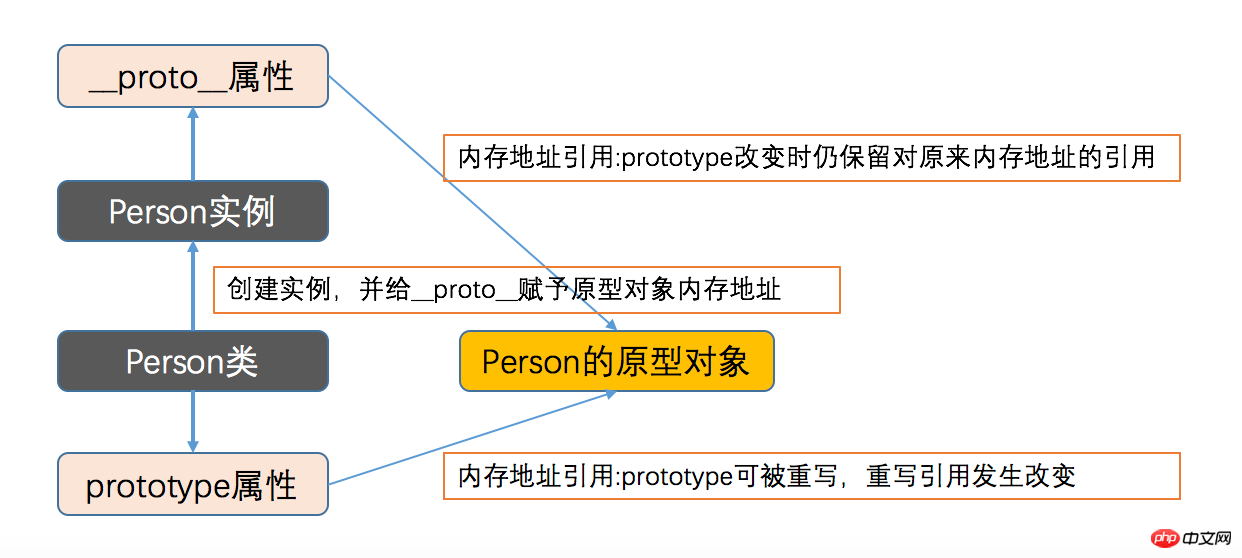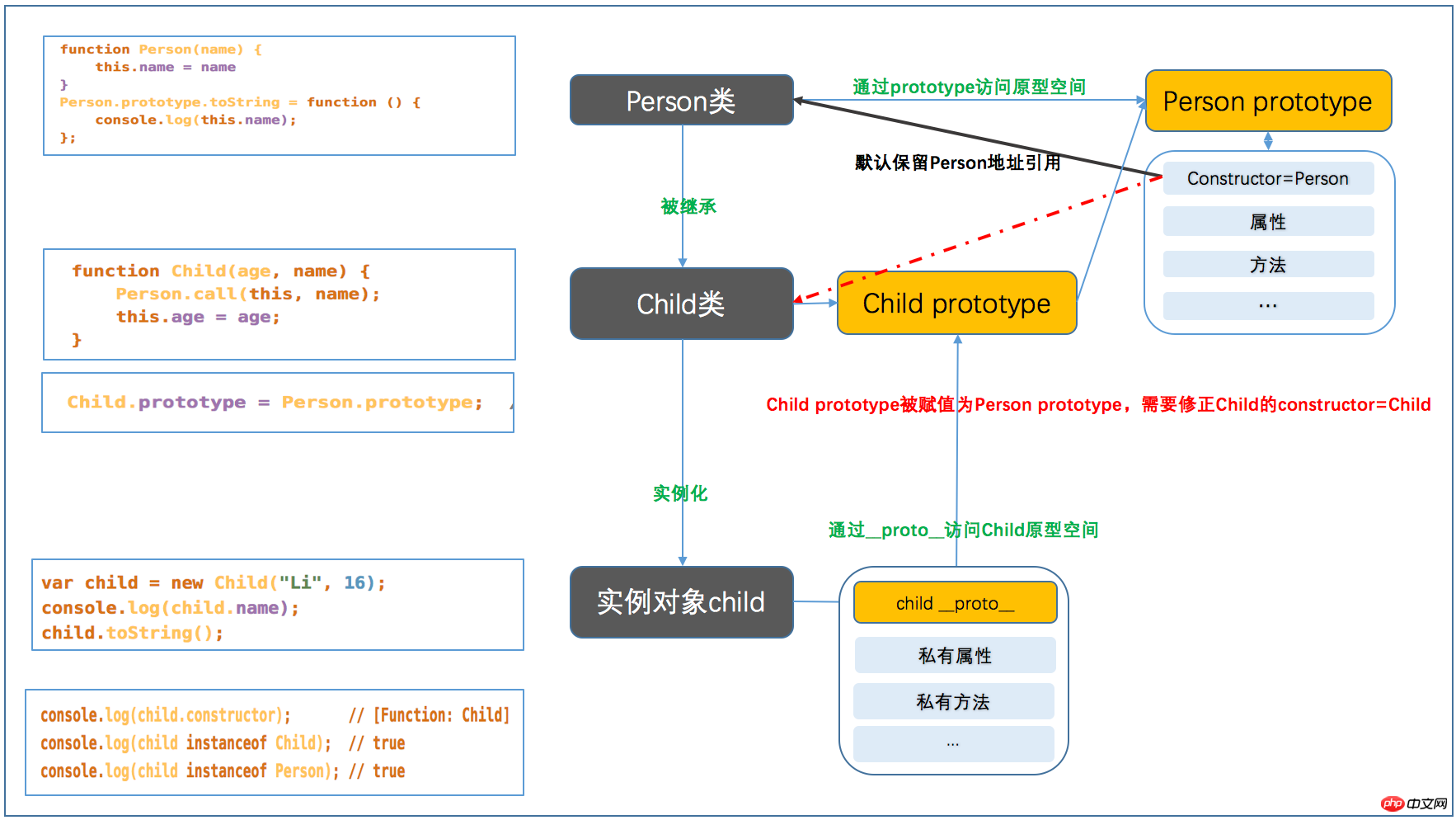js中自定义对象的解析
这篇文章主要介绍了关于js中自定义对象的解析,有着一定的参考价值,现在分享给大家,有需要的朋友可以参考一下
一、对象
1.字面量创建对象
var person = {
name: "sun",
age: 18,
work: function () {
console.log(this.name + "is working...");
},
address: {
home: "大屯里xxx路xxx小区xx单元xxx室",
phone: "123456789",
}
};
person.work();
console.log(person.address.home);2.数据描述和存取描述设置
var person = {
age: 18,
address: {
home: "大屯里xxx路xxx小区xx单元xxx室",
phone: "123456789",
}
};
Object.defineProperties(person, {
name: {
value: "sun", // 该属性的值,可被读取
writable: true, // 表示能否修改属性的值,默认值为true
configurable: true, // 表示能否delete该属性并重新定义,直接在对象上定义的属性默认值为true
enumerable: true // 表示能否通过for-in枚举,直接在对象上定义的属性默认值为true
},
work: {
value: function(){
console.log(this.name + "is working...");
},
// 通过Object.defineProperty和Object.defineProperties定义属性,
// 如果没有声明writable、configurable、enumerable,它们的默认值都是false
}
});
person.work();
console.log(person.address.home);3.get和set
var circle = {
value: 10,
get girth(){
return 2 * 3.14 * this.R
},
get area(){
return 3.4 * this.R * this.R
},
};
Object.defineProperty(circle, "R", {
get : function () {
return this.value;
},
set : function (val) {
console.log("半径被修改了!");
this.value = val;
}
});
circle.R = 100;
console.log("girth: " + circle.girth + "area: " + circle.area);4.数据描述和存取描述检查
var circle = {
R: 10,
// __proto__: null,
get area(){
return 3.4 * this.R * this.R
},
};
Object.defineProperty(circle, "site", {
value: [0, 2.2, 4.1],
// enumerable: true, // 是否可配置(读取),不设置为true时,Object.keys(circle))和Object.values(circle))将获取不到该键值对
});
console.log("R" in circle); // 检查属性
console.log(circle.hasOwnProperty("R")); // 检查自有的属性
console.log(circle.propertyIsEnumerable("R")); // 检查属性是否是可枚举的
// Object对象的方法
console.log(Object.keys(circle));
console.log(Object.values(circle));
console.log(Object.getOwnPropertyNames(circle)); // 检查对象自身所有属性
console.log(Object.getOwnPropertyDescriptor(circle, "R")); // 得到circle对象关于R属性的描述二、prototype
1.prototype释义
- 每一次创建函数,解析器都会向函数中添加一个属性:prototype - 如果函数作为普通函数调用prototype,没有任何作用 - 当该函数以构造函数的形式调用时,它会有一个隐含的属性__proto__指向其原型对象 - 每个实例有各自的__proto__指向原型对象的prototype, 也就是原型对象中的属性和方法被调用函数"共享" - 当类的原型对象prototype指向的内存地址发生改变时,已创建实例的__proto__ !== prototype,也就是不会被覆盖。而新创建的实例仍然是__proto__ === prototyp
function Person(name, age) {
this.name = name;
this.age = age;
}
// Person.prototype.gender = "male";
// Person.prototype.sayHello = function () {
// return this.name + ", " + this.age + "years old."
// };
Person.prototype = {
gender: "male",
sayHello: function () {
return this.name + ", " + this.age + "years old."
}
};
var p1 = new Person("孙悟空", 2000);
p1.sayHello();
console.log(Person.prototype);
console.log(Person.prototype.constructor === Person);2.prototype与__proto__

function Person() {}
var obj1 = { gender: "male"}; // 创建两个内存地址
var obj2 = { age: 200 };
Person.prototype = obj1;
var p1 = new Person();
console.log(p1.__proto__ === Person.prototype);
console.log(p1.__proto__.gender);
console.log(Person.prototype);
Person.prototype = obj2;
var p2 = new Person();
console.log(p2.__proto__.age);
console.log(Person.prototype);
console.log(p1.__proto__.age); // undefined
console.log(p2.__proto__.gender); // undefined
console.log(p1.__proto__ === Person.prototype); // false,表示当prototype指向的内存地址改变时,已经创建的实例对象的__proto__仍指向原来的内存地址
console.log(p2.__proto__ === Person.prototype);function Person() {}
Person.prototype = {name: "xxx", age: 100,};
var p1 = new Person();
console.log(p1.__proto__.name);
Person.prototype = { price: 998,};
var p2 = new Person();
console.log(p2.__proto__.price);
console.log(p1.__proto__.price); // undefined
console.log(p2.__proto__.name); // undefiend
console.log(p1.__proto__ === Person.prototype); // false, 原型对象的内存地址引用已发生改变
console.log(p1.__proto__.age); // __proto__指向的内存地址被保留
console.log(p2.__proto__ === Person.prototype); // truefunction Person() {}
Person.prototype = { price: 60 };
var p1 = new Person();
Person.prototype = { price: 998};
var p2 = new Person();
console.log(p1.__proto__ === Person.prototype); // 依然是false
console.log(p2.__proto__ === Person.prototype); // true3.prototype之共享性
// prototype非常类似python中的静态属性和静态方法。每个实例都可以访问同一块内存空间。
function Person() {}
Person.prototype = {price: 60};
var p1 = new Person();
var p2 = new Person();
console.log(p1.__proto__.price);
console.log(p2.__proto__.price);
console.log(Person.prototype.price);4.prototype之继承性
// 当访问实例对象的一个属性或方法时,它会先在对象自身中查找,如果有则直接使用;如果没有则在原型对象中继续查找,如果有则直接使用
function Person() {}
Person.prototype = {price: 60};
var p1 = new Person();
var p2 = new Person();
console.log(p1.price);
console.log(p2.price);
console.log(Person.prototype.price);三、类
1.类的封装
// 字面量方法(工厂方法) -- 直接在var obj = {}内部写代码,缺点是只实例化一次
// 构造函数方法 -- 只用构造函数声明this,缺点是可扩展性差,数据重复
// 原型方法 -- 只用prototype声明共有的属性和方法,缺点是实例的数据相同,不满足多态1.混合的构造函数/原型方法
// 最广泛的使用方法
function Person(name, age) {
this.name = name;
this.age = age;
}
// prototype写在外面是为了保证其动态增加公共属性和方法
Person.prototype.sayHello = function () {
console.log(this.name + ", " + this.age + " years old."); // 把共有的属性和方法封装到prototype中
};
var p = new Person("孙悟空", 2000);
p.sayHello();// 我把它写给Person的属性,让父类也能够访问
function Person(name, age) {
Person.group = Person.prototype.group = "西天取经组";
Person.toString = Person.prototype.toString = function (){
console.log("Person: " + Person.group)
};
this.name = name;
this.age = age;
this.sayHello = function () {
console.log(this.name + ", " + this.age + "years old.")
};
}
var person = new Person("孙悟空", 2000);
console.log(person.constructor); // 检查构造器函数
console.log(person instanceof Person); // 检查是否为其原型类
person.sayHello();
Person.toString();2.动态原型方法
// 也是常用的方法
function Person(name, age) {
this.name = name;
this.age = age;
if (typeof Person._initialized === "undefined"){
Person.prototype.sayHello = function () {
console.log(this.name + ", " + this.age + " years old.");
};
Person._initialized = true;
}
}
var p = new Person("孙悟空", 2000);
p.sayHello();3.混合工厂方法
// 混合工厂方法 -- 存在与工厂方法类似的问题,不建议使用
function Person(name, age) {
var obj = {};
obj.name = name;
obj.age = age;
obj.sayHello = function () {
console.log(this.name + ", " + this.age + " years old.");
};
return obj
}
var p = new Person("孙悟空", 2000);
p.sayHello();4.再探讨类结构
function Person(name, age) {
// 静态属性
Person.group = "西天取经四人组,暗合金木水火土";
// 静态方法
Person.introduce = function () {
console.log("贫僧自东土大唐而来")
};
// 实例属性
this.name = name;
this.age = age;
// 实例方法,应该写在prototype中
this.say = function () {
console.log("hello, i'm " + this.name);
};
Person.prototype.introduce = Person.introduce; // 此时Person类和其实例都可以使用introduce方法
// 父类使用实例方法
Person.example = Person.prototype.example = function (self) {
self = self || this;
console.log(self.name + " " + self.age);
}
}
// 在python中,实例可以访问父类的属性和方法,父类也可以使用实例方法
// 在java和js中,实例不能调用父类的静态属性和静态方法,父类不能使用实例方法
// 如果想让实例和父类共享一个属性或者方法,就只能放到方法区并创建引用
var sun = new Person("孙悟空", 2000);
Person.introduce(); // 父类调用静态方法
sun.say();
sun.introduce(); // 实例调用静态方法
Person.example(sun); // 父类调用实例方法
sun.example(); // 子类调用实例方法
// 可见,prototype是父类和实例的沟通桥梁2.自定义类
function Person(name, age) {
this.name = name;
this.age = age;
this.sayHello = function () {
console.log(this.name + ", " + this.age + "years old.")
};
}
function New(Person) {
return function () {
var obj = {"__proto__": Person.prototype}; // 必须写在这里
Person.apply(obj, arguments); // arguments同this一样,是默认自带的关键字,用于存储传入的参数
return obj
}
}
var temp = New(Person);
var p1 = temp("孙悟空", 2000);
var p2 = temp("猪八戒", 1);
p1.sayHello();
p2.sayHello();3.类的继承
1.拷贝继承字面量对象(实例)
var person = {
name: "Li",
age: 16,
address: {
home: "none",
city: "none",
},
say: function(){
console.log("hello, guy.")
}
};
var child = {gender:"female",};
function extendDeeply (p, c){
var c = c || {};
for (var prop in p) {
if (typeof p[prop] === "object") {
c[prop] = (p[prop].constructor === Array) ? [] : {};
extendDeeply(p[prop], c[prop]);
} else {
c[prop] = p[prop];
}
}
}
extendDeeply(person, child);
console.log(child);
child.say();2.call和apply实现对象继承
function Person(name, age) {
this.name = name;
this.age = age;
this.address = {
home: "none",
city: "none",
}
}
Person.prototype.say = function () {
console.log("hello, guy.")
};
// 它继承的只是实例对象this,无法继承父类原型prototyp
function Child(name, age) {
Person.call(this, name, age);
this.gender = "female";
}
var child = new Child("Li", 16);
console.log(child);
// child.say(); 报错: child.say is not a function.对象继承的缺点:只继承了实例对象的可访问的属性和方法,没有继承原型
3.原型链继承
// 原型链继承
function Person() {}
Person.prototype.name = "Person";
Person.prototype.toString = function () {
console.log(this.name);
};
function Child(name, age) {
this.age = age;
this.name = name;
}
Child.prototype = Person.prototype;
Child.prototype.constructor = Child;
var child = new Child("Li", 16);
console.log(child.name + " " + child.age);
child.toString();
// 其缺点是之继承了原型,没有继承实例4.create实现类继承
function Person(name, age) {
this.name = name;
this.age = age;
this.address = {
home: "none",
city: "none",
}
}
Person.prototype.say = function () {
console.log("hello, guy.")
};
function Child(P, name, age) {
function F() {}
F.prototype = new P(name, age);
var c = new F();
return c;
}
Child.prototype.constructor = Child; // 无法修正
var child = new Child(Person, "Li", 16);
console.log(child);
console.log(child.name);
child.say();
console.log(child.constructor); // 结果为[Function: Person],构造器指向无法修正
console.log(child instanceof Child); // false
console.log(child instanceof Person); // true5.Object.create实现类继承 -- 推荐的方式
// Object.create继承,实现原理和上面的create类似
// 1.创建父类
function Person() {}
Person.prototype.sayPerson = function () {
console.log("hello, Person.")
};
// 2.创建子类
function Child(gender) {this.gender = gender;}
// 3.create继承
// Object.create的第二个参数是属性描述
Child.prototype = Object.create(Person.prototype, {
name: {
value: "Li",
writable: true,
enumerable: true,
configurable: true,
},
age: {
value: 16,
writable:true,
configurable:true,
enumerable:true,
},
}); // 重写子类prototype
Child.prototype.constructor = Child; // constructor 修正
// 4.在create之后写子类的prototype
Child.prototype.sayChild = function () {
console.log("hello, Child.")
};
var child = new Child("female");
console.log(child);
console.log(child.name + " " + child.age);
child.sayChild();
child.sayPerson();5.组合继承 -- 推荐的方式
function Person(name, age) {
this.name =name;
this.age = age;
}
Person.prototype.toString = function () {
console.log(this.name + " " + this.age);
};
function Child(name, age, gender) {
Person.call(this, name, age);
this.gender = gender;
}
Child.prototype = new Person(); // new时不传参数,是为了只继承原型,即Child.prototype = Person.prototype
// Child.prototype = Person.prototype; // 两者等价
Child.prototype.constructor = Child;
var child = new Child("Li", 16, "female");
console.log(child);
child.toString();
console.log(child instanceof Child); // true
console.log(child instanceof Person); // true6.继承总结
js继承需要继承两部分内容: - 一部分是父类构造函数中的this定义属性和方法,相当于继承初始化的数据 - 另一部分是父类的prototype,相当于继承实例方法- 要实现this的继承,可以用call(apply);要实现prtotype的继承,可以用原型链 - 要实现两者的继承,可以用this+prototype的组合方式,Object.create本质上也是这种思路
7.prototype、constructor和__proto__在继承中的关系

以上就是本文的全部内容,希望对大家的学习有所帮助,更多相关内容请关注PHP中文网!
相关推荐:
以上是js中自定义对象的解析的详细内容。更多信息请关注PHP中文网其他相关文章!

热AI工具

Undresser.AI Undress
人工智能驱动的应用程序,用于创建逼真的裸体照片

AI Clothes Remover
用于从照片中去除衣服的在线人工智能工具。

Undress AI Tool
免费脱衣服图片

Clothoff.io
AI脱衣机

AI Hentai Generator
免费生成ai无尽的。

热门文章

热工具

记事本++7.3.1
好用且免费的代码编辑器

SublimeText3汉化版
中文版,非常好用

禅工作室 13.0.1
功能强大的PHP集成开发环境

Dreamweaver CS6
视觉化网页开发工具

SublimeText3 Mac版
神级代码编辑软件(SublimeText3)

热门话题
 如何在浏览器中优化JavaScript代码以进行性能?
Mar 18, 2025 pm 03:14 PM
如何在浏览器中优化JavaScript代码以进行性能?
Mar 18, 2025 pm 03:14 PM
本文讨论了在浏览器中优化JavaScript性能的策略,重点是减少执行时间并最大程度地减少对页面负载速度的影响。
 如何使用浏览器开发人员工具有效调试JavaScript代码?
Mar 18, 2025 pm 03:16 PM
如何使用浏览器开发人员工具有效调试JavaScript代码?
Mar 18, 2025 pm 03:16 PM
本文讨论了使用浏览器开发人员工具的有效JavaScript调试,专注于设置断点,使用控制台和分析性能。
 如何使用源地图调试缩小JavaScript代码?
Mar 18, 2025 pm 03:17 PM
如何使用源地图调试缩小JavaScript代码?
Mar 18, 2025 pm 03:17 PM
本文说明了如何使用源地图通过将其映射回原始代码来调试JAVASCRIPT。它讨论了启用源地图,设置断点以及使用Chrome DevTools和WebPack之类的工具。
 谁得到更多的Python或JavaScript?
Apr 04, 2025 am 12:09 AM
谁得到更多的Python或JavaScript?
Apr 04, 2025 am 12:09 AM
Python和JavaScript开发者的薪资没有绝对的高低,具体取决于技能和行业需求。1.Python在数据科学和机器学习领域可能薪资更高。2.JavaScript在前端和全栈开发中需求大,薪资也可观。3.影响因素包括经验、地理位置、公司规模和特定技能。
 开始使用Chart.js:PIE,DONUT和BUBBLE图表
Mar 15, 2025 am 09:19 AM
开始使用Chart.js:PIE,DONUT和BUBBLE图表
Mar 15, 2025 am 09:19 AM
本教程将介绍如何使用 Chart.js 创建饼图、环形图和气泡图。此前,我们已学习了 Chart.js 的四种图表类型:折线图和条形图(教程二),以及雷达图和极地区域图(教程三)。 创建饼图和环形图 饼图和环形图非常适合展示某个整体被划分为不同部分的比例。例如,可以使用饼图展示野生动物园中雄狮、雌狮和幼狮的百分比,或不同候选人在选举中获得的投票百分比。 饼图仅适用于比较单个参数或数据集。需要注意的是,饼图无法绘制值为零的实体,因为饼图中扇形的角度取决于数据点的数值大小。这意味着任何占比为零的实体
 console.log输出结果差异:两次调用为何不同?
Apr 04, 2025 pm 05:12 PM
console.log输出结果差异:两次调用为何不同?
Apr 04, 2025 pm 05:12 PM
深入探讨console.log输出差异的根源本文将分析一段代码中console.log函数输出结果的差异,并解释其背后的原因。�...








